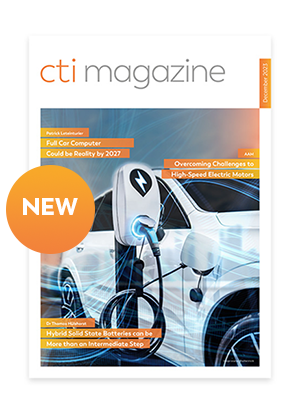Dual clutch transmissions offering disruption-free traction are in the portfolio of all well-known auto manufacturers. The hydraulic accumulator is the ideal solution to ensure that hydraulic actuations are as efficient as possible even at peak demand. Independent investigations have shown that the hydraulic accumulator makes it possible to gear components, such as the hydraulic pump for actuators, to reduced fuel consumption. This saves energy and reduces CO2 emissions. The hydraulic accumulator needs only about a sixth of energy of a conventional constant pump. Thus, the CO2 emission is reduced by up to 4 g/km.
Thorsten Hillesheim, Technical Director, Freudenberg Sealing Technologies
Download CTI Mag to read full article
Issue: #December 2017
The market share held by automatic transmissions, dual clutch transmissions (DSG) and hydraulic control systems for start-stop applications is growing each year. The variety of technical solutions for hydraulic actuation is also growing. They range from hydraulic accumulators, to constant and adjustable pumps, all the way to one- and two-stage electrically driven pumps. The following analysis shows how efficiently the piston or membrane versions of hydraulic accumulators perform compared to a torque-dependent, pressure-regulated system with a combustion-engine-driven constant pump. The investigation is based on various driving cycles, defined load values, pressure and volume flow requirements and the efficiencies of individual components. The test series used a compact vehicle with a direct-injection, turbocharged 4-cylinder gasoline engine with 1.4 liters of displacement, 250 Nm of torque, and 110 kW. The transmission is a 7-speed, dry clutch DSG with electro-hydraulic control, including an accumulator charging system.
Hydraulic accumulator for covering peak needs
A hydraulic accumulator consists of a gas segment and a liquid segment, which are separated by a gas-tight (piston or membrane) medium divider. The gas side is filled with nitrogen, and the liquid area is connected to the hydraulic circuit. With an increase in pressure, the hydraulic accumulator takes in the pressure fluid and the gas mixture is compressed. This mostly takes place in the stages between shifting. If the pressure declines, the compressed gas expands out again and forces the stored fluid into the transmission’s circuit and thus to the actuators.
A hydraulic accumulator is the ideal solution to cover the peak demand that arises as the gear selector is activated, for example. In this way, both the oil pump and the drive electric motor can be designed for average fuel consumption – they are smaller and thus significantly more efficient. Hydraulic accumulators thus make a significant contribution to improved fuel economy and help reduce CO2 emissions. One of the best-known examples of the successful use of hydraulic accumulators is the VW DQ200 DCT transmission introduced with very low energy consumption in 2007. The main supplier of this hydraulic accumulator is Freudenberg Sealing Technologies in Remagen.
 Minimization of hydraulic losses
Minimization of hydraulic losses
The minimization of hydraulic losses plays a crucial role in the use of hydraulic accumulators. To make a comparison of overall efficiency with the combustion-engine solution, the losses due to the interconnected components were determined. This includes the oil pump with electric drive, battery, generator and belt drive. The basic driving cycles in the investigation are the European NEDC and the American FTP75. They differ mainly in acceleration, the driving experience, and trips with air-conditioning. But in the test, these parameters only affect the amount of deviation from the defined cycle fuel consumption – and not the efficiency investigated in the test. Picture 1 shows a summary of energy efficiency at a glance. Here, it becomes visible that the hydraulic accumulator needs only about a sixth of energy of a conventional constant pump.
To assess the efficiency of the hydraulic accumulator itself, the frequency and the cycle profile were determined. If you compare the charging process in the two driving cycles, the frequencies are about 0.05 Hz for both the NEDC and the FTP75 – the accumulator is charged every 20 seconds on average. If you analyze the measured profile, the expected sawtooth behavior does not merely occur during charging and discharging. It also occurs when no gear changes are taking place. This means that a stable pressure level has not developed at this stage. This arises in large part due to leakage at the pressure control and directional valves. Since two to three pressure control valves, depending on the structure, are continuously active in each sub-gearbox, the loss can reach a magnitude that exceeds the usable accumulator discharge volume; even though special low-leakage valves are involved, with leakage levels between about 15 and 50 ml/min. That means a large portion of the control oil stored with the substantial application of energy is unused. One solution could be a new configuration with fewer valves. The result is a storage efficiency of 0.92 for a hydraulic accumulator, based on the described cycle profile at a frequency of 0.05 Hz and the defined pressure and volume levels.
Download CTI Mag to read full article